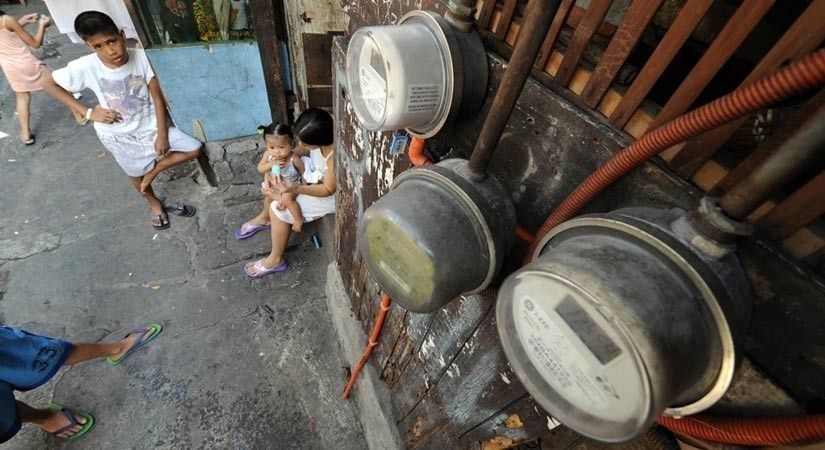Commentary: Pro-consumer power supply

The Department of Energy circular requiring distribution utilities to procure power through competitive selection process (CSP) aimed at cutting down the generation charge is a laudable policy reform that has finally been implemented. Thanks to the pressure of various consumer groups, industry and the government.
The immediate implementation of the Supreme Court order upholding the 2018 DOE circular on the CSP was a good move of Secretary Alfonso Cusi.
This newly implemented process is beginning to see encouraging results with the successful bidding of 1,200 megawatts (NET) contract capacity to supply Meralco's requirements that take effect on Dec. 26, 2019. The 10-year contract went thru the CSP process administered by third party bids and awards committee (TPBAC) constituted pursuant to the DOE circular.
Commendable was Meralco’s implementation of a sealed reserve levelized cost of energy (LCOE) cap to ensure that the bids are lower than current generation charges. The bids proved very competitive as by Phinma Energy Corporation, San Miguel Energy Corporation and South Premiere Power Corporation bids were even lower than Meralco’s reserve LCOE cap.
Information disclosed to the public said that the TPBAC declared the bids submitted by Phinma, San Miguel and South Premiere to be the “best bids”. The TPBAC made the findings based on a non-discretionary "pass/fail" assessment for completeness after they determined that there was no failure of bidding. The bidding was witnessed by representatives from the DOE and several generation companies.
Phinma President Eric Francia said, "I just want to express our appreciation to the TPBAC and TWG for a well-run process. It was a good experience and hopefully, we will have more pro-consumer bids moving forward."
After post-qualification, the TPBAC is expected to issue the respective notices of award to those who satisfactorily passed post-qualification, soon to be followed by the signing of the power supply agreements with Meralco.
Phinma's bid was for contract capacity of 200 MW with an all-in headline rate (VAT inclusive) of 4.7450 Php/kWh and computed all-in LCOE (VAT inclusive) of 4.8849 Php/kWh. San Miguel’s bid was for 330 MW at all-in headline rate (VAT inclusive) of 4.6314 Php/kWh and computed all-in LCOE (VAT inclusive) of 4.9299 Php/kWh. South Premiere’s bid was for 670 MW and had an all-in headline rate (VAT Inclusive) of 4.6314 Php/kWh and computed all-in LCOE (VAT inclusive) of 4.9300 Php/kWh. These bids collectively totaled 1,200 MW in a contract capacity.
These bids are much lower than the all-in headline rate (VAT-inclusive) of 4.9196 Php/kWh and computed all-in LCOE (VAT-inclusive) 5.3694 Php/kWh reserve prices pre-determined by Meralco based on recently ERC-approved contracts and disclosed only upon the opening of bids.
These new power projects should come online before the hot summer season which has seen increasing yellow and red alerts, and even power outages in some areas of Luzon. The DOE has raised many warnings calling for the need to accelerate the building of more baseload power plants to meet the growing demand driven by increasing economic activity and population.
In fact, since CitizenWatch.PH started the monitoring initiative “Power Plant Watch” in 2015, more alerts have been raised this year in the Luzon Grid due to insufficient reserves brought about by high system demand, scheduled maintenance and forced outages partly due to many aging power plants that need to be upgraded or totally replaced with more modern and efficient technology.
To put our power situation in perspective, the DOE projects that before this administration ends in 2022, our country will require 10,000 MW additional capacity to prevent power outages. In the long-term, the country will need an additional 43,765 MW by 2040.
Meralco clarified that the all-in rate already includes line rental and VAT, and the cost of replacement power for all plant outages. The generator companies will also be liable to pay a fine if they are unable to deliver power, which will be used to reduce the generation cost to the consumers.
All considered kudos to the DOE and Meralco for what I hope will just be the first of more CSPs that will result in even lower generation charges. With this additional 1,200 MW expected to go online in December, the DOE needs to move more than double time just to close the power supply gap before the 2020 national elections.
This is indeed a good start and should prompt more successful CSP’s, more state-of-the-art power plants, no brownouts and lower generation costs.
But suddenly, as if on cue, the DOE gets hit by a big spoiler courtesy of Bayan Muna partylist’s petition to the Supreme Court for a temporary restraining order on the issuance of circular 2018-02-003 which allows the entry of a third party recognized by the Energy Regulatory Commission and National Electrification Administration allegedly raising suspicions or the possibility of manipulation of the competitive selection process.
The circular in question was issued in 2015 so why just raise this issue now? The timing raises suspicion. If this turns out to be just another anti-big business, anti-progress, destabilization agenda typical of the leftist ideology, the Supreme Court should be able to see thru this and consider the strategic consequences that will result should this petition prosper.
The DOE will fail to hit its power supply targets and all consumers of the country will likely suffer the return of daily brownouts.
We needed all these megawatts a decade ago and if we don’t build these power plants now it will again be the poorest Filipinos, which these leftists so fanatically claim they are fighting for, who will suffer the most.
Ren de los Santos is research manager at Stratbase Group and co-convenor at CitizenWatch Philippines.
- Latest


























